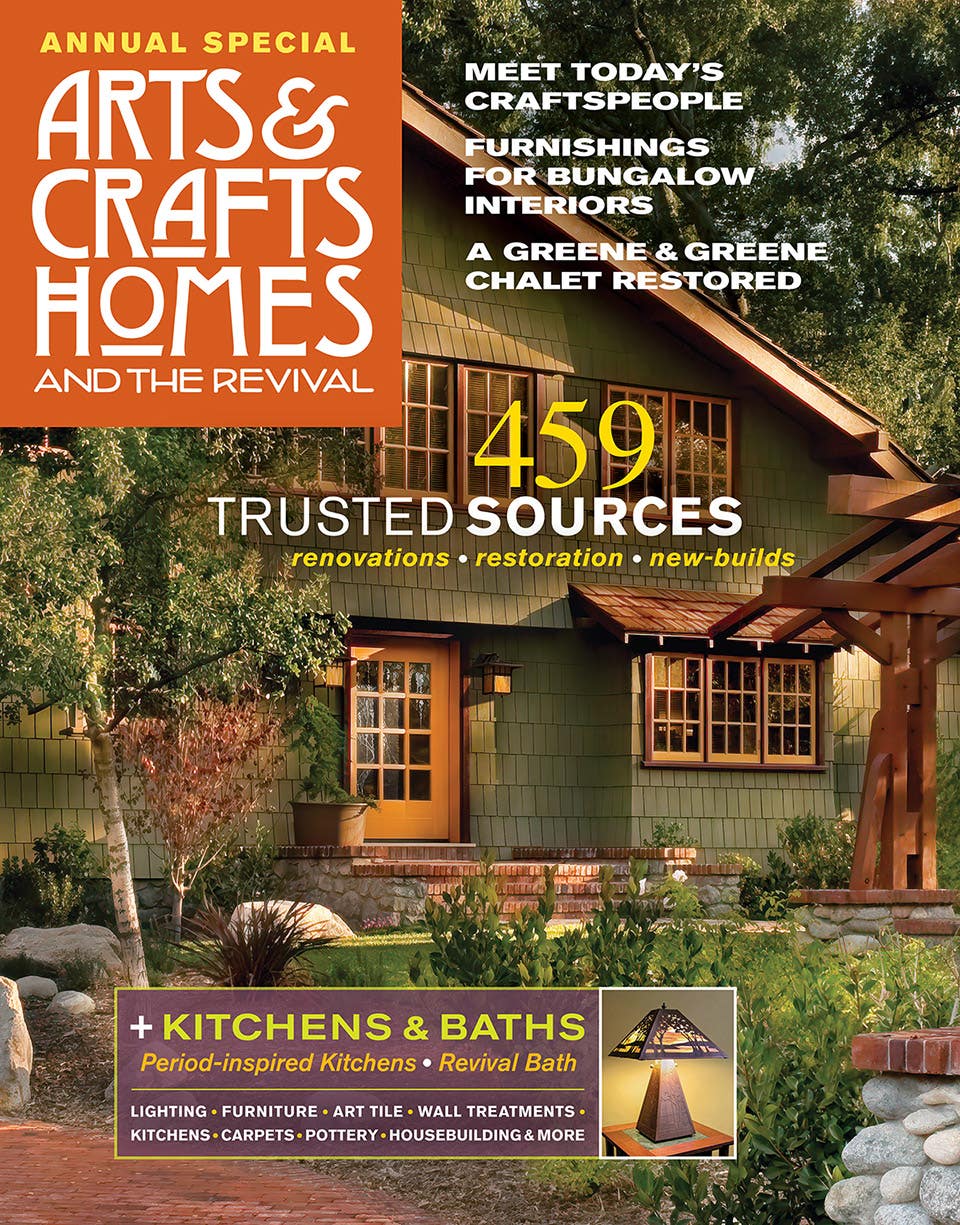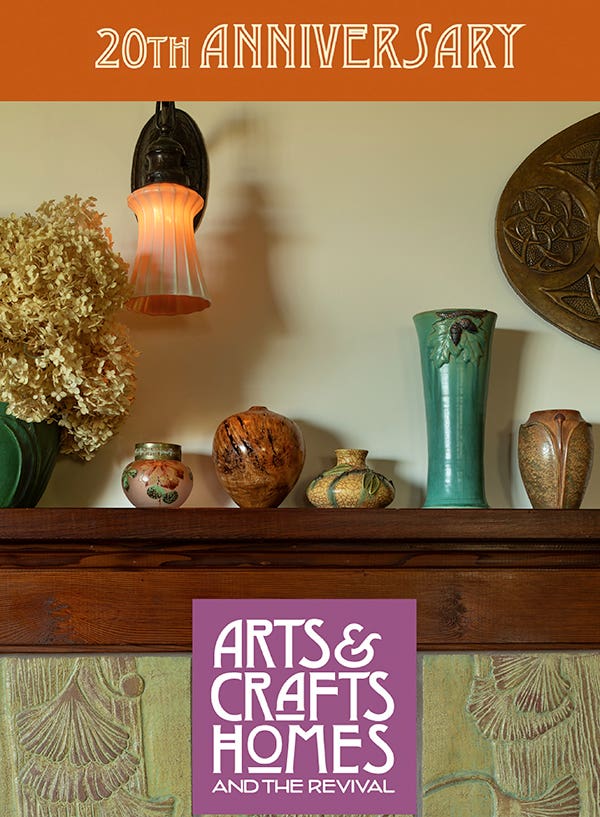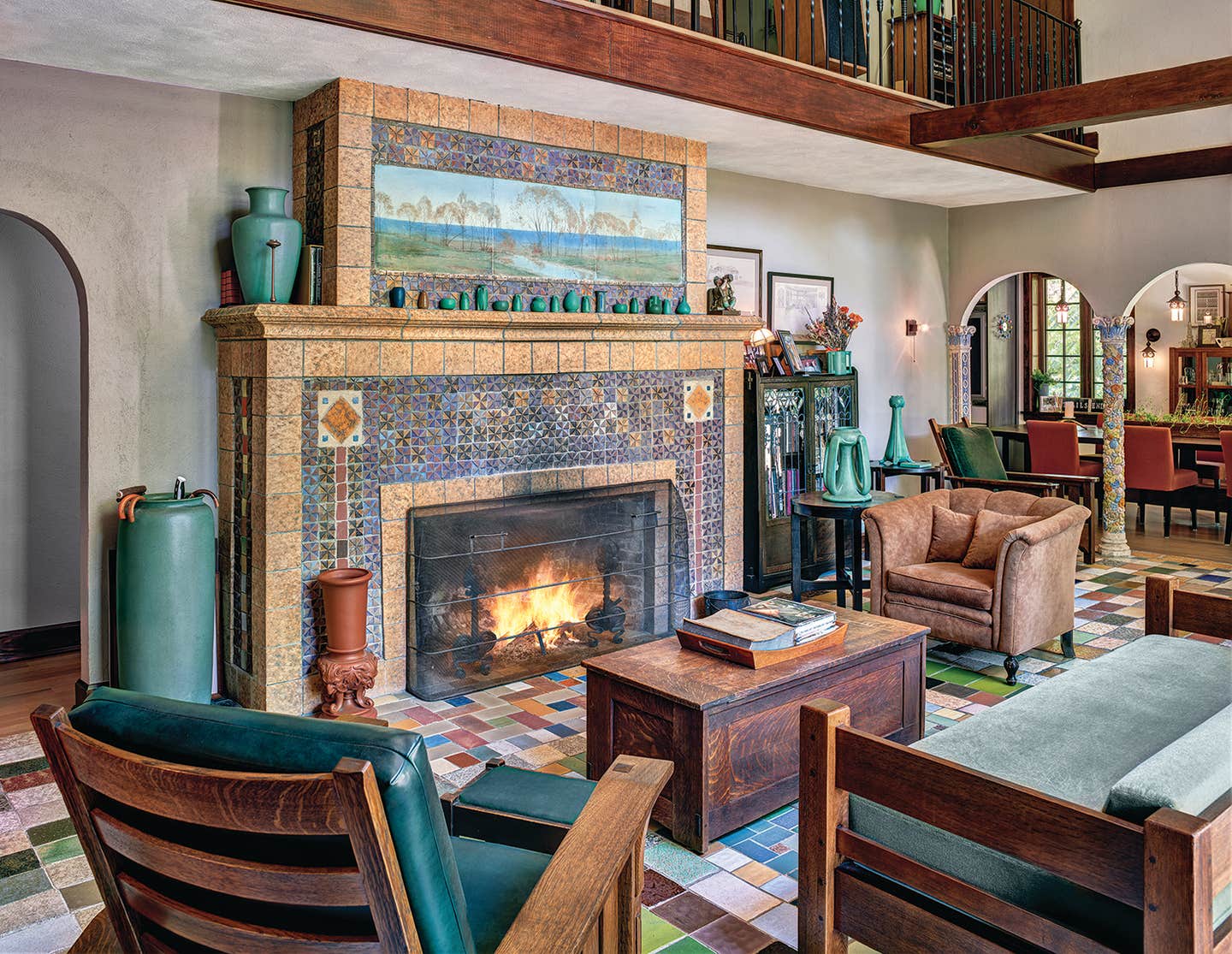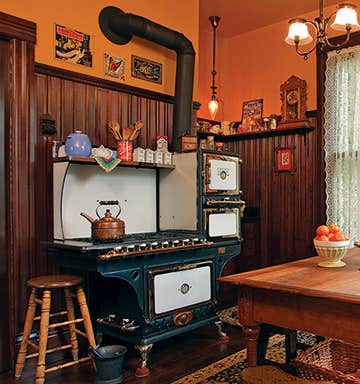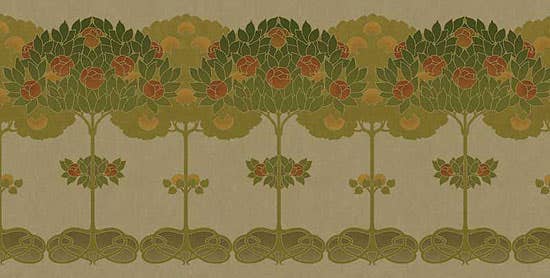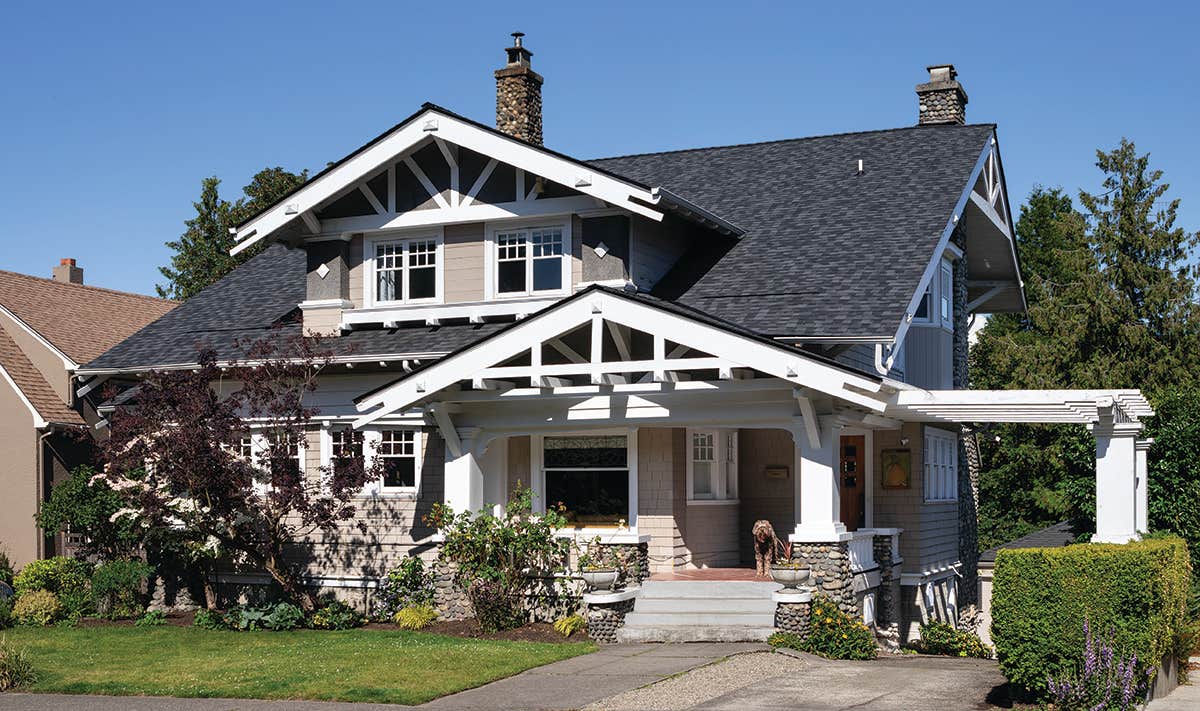Hollywood Ending for a 1907 American Foursquare
See inside a refurnished 1907 Foursquare.
The price was right, says Denise Bartelt about the house she bought with Drew Nasto: “It was the cheapest one we looked at.” Their search had begun in Hollywood, where it ended—sort of.
Nine years ago, the New Jersey natives traveled to Los Angeles to find a house to buy together. Their Garden State budget turned out to be no match for Golden State prices. “We couldn’t afford anything that would stand in a strong wind,” Denise says. The couple thought they might have better luck in Portland, so they headed north to Oregon. Within a week, they’d purchased a 1907 American Foursquare in that city’s Hollywood district.
“In L.A., houses like this have been gutted or painted crazy colors or changed a lot,” Denise explains. “But Portlanders didn’t have a lot of remodeling money, so that has preserved a lot of the houses.”
There’s a fine line between preservation and benign neglect, and the Hollywood house walked it. Although the interior still boasted unpainted fir woodwork, functioning pocket doors, and a built-in sideboard, the house’s surroundings were grim. Shrubbery shrouded the front porch, casting a pall over the interior. Inside, white vinyl wall-covering and track lighting did nothing to dispel the gloom. “It was pretty ugly,” Drew concedes.
The pair moved in and began to undo decades of neglect. “We wanted to put back as much historic character as we could,” says Denise. “We wanted it to be a classic, comfortable, historically correct house.”
When contractor Wade Freitag of Craftsman Design and Renovation stripped off the asphalt siding, he found original clapboard siding underneath. Inside, the homeowners peeled vinyl off the living room walls and removed calico paper from the kitchen and master bedroom. (“They liked calico wallpaper … a lot,” laughs Denise.) The globe light hanging from the bedroom ceiling fan was covered with pink tempera paint, giving a lurid blush to the room. “With the calico wallpaper peeling off, it looked like the brothel from Little House on the Prairie,” Denise says.
The couple refinished the wood floors, but heeded a plasterer’s advice and decided to keep the walls as is. “Bulges and imperfections in our plaster just remind us that our house is 100 years old,” says Denise. They painted the living room a golden olive (Benjamin Moore ‘Millington Gold’), but were hard-pressed to come up with colors for the dining room and entry hall. Color consultants C.J. Hurley and Barbara Pierce recommended peacock blue for the dining room, and gray-green walls with a dark copper ceiling for the entry hall. The latter makes the ceiling feel lower and the entry more defined. “The idea was to compress the space,” explains Drew, “so people would flow into the living room instead of hanging out by the front door.”
Whenever any hardware had to be replaced, Drew sought out vintage fittings made by Yale & Towne, a popular manufacturer of the period. He and Denise were equally obsessive about lighting: “We’re lighting lunatics,” she says. Over the years, they have replaced reproduction fixtures with original period lights, most of which they found on eBay.
Although Denise admits that online auctions can be competitive and the prices sky-high, if you stick with it long enough, you still can get lucky. “You find that one piece [on an auction] that nobody ‘gets’ or where nobody’s paying attention,” she says, citing as examples the sconce on the stair landing and the fireplace fender—just two of the Art Nouveau accents in the house.
The couple was much less orthodox when it came to furniture, opting for Stickley reproductions in most of the rooms. “If you find something that’s going to look drop-dead gorgeous in your house, and it’s of good quality, then even if it’s a reproduction—so what?” Denise says. One of several exceptions is the unmarked daybed (possibly Gustav Stickley) that anchors the refurbished sleeping porch upstairs.
Denise was so inspired by her experience working on the house that she ended up taking a job with the Historic Preservation League of Oregon, where she now serves as the web and social media manager. “The house got me my job,” she says. “And my job makes me love the house even more.”
Period Ambience
Affordable and comfortable reproduction furniture was welcomed in this house, against a backdrop of aged, imperfect plaster and original woodwork. Period paint colors, antiques, and vintage collectibles complete the picture.
True antiques play a supporting role and, like the side table in the living room and the daybed on the sleeping porch, are unsigned—maker unknown. When it comes to lighting, however, Denise and Drew prefer the real thing.
Each time the couple acquired an antique fixture, they replaced one of the reproductions that was already there. Now almost every fixture in the house is vintage. Anonymous Art Nouveau chandeliers grace the living and dining rooms, while the entry hall is home to a curlicue-shaped fixture that retains its original gas lamp.
Their foundation pieces in place, the couple started adding period accessories. The set of Art Nouveau china was acquired at an estate sale, and augmented with pieces from eBay. The Art Nouveau tea set and fireplace fender were also found on eBay. But they didn’t have to go online to find the vintage telephone in the living room—it belonged to Denise’s grandmother.
The Kitchen
When Drew Nasto and Denise Bartelt bought their 1907 Foursquare, they inherited a kitchen remodeled in the late 1970s. It wasn’t worth saving. Contractor Wade Freitag gutted the space, revealing the original fir floors. Mimicking simple “sanitary” cabinets of the bungalow era, crisp white cabinets now stretch to the ceiling (offering storage for seldom-used items). The counters are topped with black granite, completing a classic black-and-white scheme. Denise concedes that granite is anathema to most preservationists: “You’re not allowed to say the g-word,” she whispers conspiratorially. “But you know what? I hate tile countertops, and I’m not having them.” The granite was given a honed finish for a more historical (and less shiny) look.
Modern stainless steel appliances with straightforward styling were deemed appropriate for the new space. An antique baker's table, purchased at auction and now used to store linens and canned goods, stands in for an island.
Arts & Crafts Homes and the Revival covers both the original movement and the ongoing revival, providing insight for restoration, kitchen renovation, updates, and new construction. Find sources for kitchen and bath, carpet, fine furniture and pottery, millwork, roofing, doors and windows, flooring, hardware and lighting. The Annual Resource Guide, with enhanced editorial chapters and beautiful photography, helps Arts & Crafts aficionados find the artisans and products to help them build, renovate, and decorate their bungalow, Craftsman, Prairie, Tudor Revival, or Arts & Crafts Revival home.

